#Data science statistics
Explore tagged Tumblr posts
Text
Data Scientist Introduction: Your Ultimate Guide to a Career in Data Science
The world of technology is evolving rapidly, and Data Scientist Introduction is one of the most sought-after topics in today’s digital era. With businesses relying heavily on data-driven strategies, the demand for skilled data scientists is at an all-time high. If you’re intrigued by data, analytics, and problem-solving, this guide will help you understand what it takes to become a data scientist and why it’s one of the most promising career paths today.
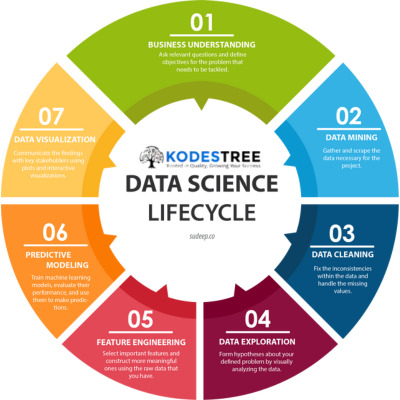
Who is a Data Scientist?
A data scientist is a professional who analyzes complex data to help organizations make informed business decisions. They combine statistics, programming, and domain expertise to extract meaningful insights from structured and unstructured data. Unlike traditional analysts, data scientists go beyond data reporting; they use machine learning, artificial intelligence, and predictive modeling to forecast trends and drive innovation.
Why is Data Science Important?
Data science plays a crucial role in multiple industries, including healthcare, finance, e-commerce, and more. Businesses leverage data science to optimize operations, enhance customer experiences, and make data-driven decisions that boost profitability. With the rise of artificial intelligence and big data, professionals skilled in data science are in high demand worldwide.
Core Skills Required for a Data Scientist
To become a data scientist, you need expertise in various domains. Here are some core skills required to excel in this field:
1. Programming and Data Manipulation
Proficiency in Python, R, and SQL
Working knowledge of data manipulation libraries such as Pandas and NumPy
Experience with database management systems
2. Mathematics and Statistics
Strong grasp of linear algebra, probability, and statistics
Understanding of hypothesis testing and statistical modeling
Knowledge of Data Science Statistics for analyzing datasets
3. Machine Learning and AI
Supervised and unsupervised learning techniques
Deep learning frameworks like TensorFlow and PyTorch
Model evaluation and optimization strategies
4. Data Visualization and Business Intelligence
Using tools like Matplotlib, Seaborn, and Tableau
Creating compelling visual stories from complex datasets
Communicating insights to non-technical stakeholders
5. Big Data and Cloud Computing
Working with platforms like Hadoop and Spark
Cloud-based services like AWS, Google Cloud, and Azure
Scalable data pipeline implementation
Educational Path to Becoming a Data Scientist
While some data scientists have formal degrees in computer science, statistics, or mathematics, others acquire skills through alternative educational paths. Here are some of the best ways to start your journey:
1. Pursue a Degree in Data Science or Related Fields
A degree in data science, computer science, or statistics provides a strong foundation. Many universities now offer specialized programs in data science that cover fundamental concepts and hands-on training.
2. Enroll in an Advance Data Science Course
For professionals looking to switch careers or upskill, an Advance Data Science Course offers a fast-track route into the field. These courses provide practical experience through real-world projects and case studies.
3. Earn a Data Science Certificate
A Data Science Certificate validates your expertise and increases your credibility in the job market. Many reputed institutions offer Data Science Certificate Programs that cover everything from machine learning to data visualization.
4. Participate in Online Learning Platforms
Platforms like Coursera, edX, and Udacity provide Data Science Programs that allow flexible learning at your own pace. These courses include interactive coding exercises, mentorship, and industry-relevant projects.
Career Opportunities in Data Science
Data science offers diverse career paths with lucrative salaries. Some of the most common roles include:
Data Scientist – Analyzes large datasets to drive business strategies
Data Analyst – Interprets data trends and provides actionable insights
Machine Learning Engineer – Develops AI models for automation and prediction
Business Intelligence Analyst – Transforms data into meaningful business reports
Data Engineer – Designs and maintains scalable data pipelines
How to Start Your Data Science Journey?
If you’re new to the field, follow these steps to build a successful career in data science:
Learn the Basics: Start with Data Science For Beginners courses to understand core concepts.
Build a Strong Foundation: Gain expertise in programming, statistics, and data visualization.
Work on Real-World Projects: Apply your knowledge to hands-on projects and case studies.
Join a Data Science Community: Engage with professionals, participate in hackathons, and network with industry experts.
Earn Certifications: Complete an Advance Data Science Course or a Data Science Certificate Program to boost your resume.
Apply for Jobs: Build a strong portfolio showcasing your skills and start applying for data science roles.
Future of Data Science
The future of data science looks promising, with advancements in AI, deep learning, and automation. Industries are heavily investing in data-driven solutions, making data science a critical skill in the modern workforce. Whether you’re a beginner or an experienced professional, continuous learning and upskilling through Data Science Great Learning programs will keep you ahead in the game.
Conclusion
A career in data science is rewarding, dynamic, and full of opportunities. Whether you're interested in analytics, machine learning, or big data, the field offers endless possibilities to innovate and grow. If you're ready to dive into this exciting career path, start with an Data Scientist Introduction course and unlock your potential in the world of data science.
Bonus Point - Kodestree provides best it courses Visit now at kodestree.com and check there affordable professional courses now!
#Data Science Programs#Data Science Statistics#Data Scientist Introduction#Data Science Certificate#Data Science Certificate Programs
0 notes
Text
Data science is powered by statistics, and in 2025, it’s more important than ever to stay informed.
Explore 50+ key statistics you need to know, including fundamental concepts, advanced techniques, and the latest methods driving data analysis, machine learning, and artificial intelligence.
Discover the key statistics transforming data science today. Explore more to master these concepts in 2025.
Know more : https://www.esparkinfo.com/blog/data-science-statistics.html
0 notes
Text
”you’re biased against men!” but am I wrong?
#radblr#prove me wrong coward#defend your scrote with statistics#and science#come on#prove me wrong with historical data#prove me wrong with facts and logic you worthless moid#feminism#prove me wrong with contextualized data#COME ON DONT BE A WEINER#stop avoiding the evidence#men whining about being accurately observed is not equivalent to reasoning#you’re evading the truth
782 notes
·
View notes
Text
i need to practice/learn excel so i gathered data about phyuri on ao3, here are my graphs. as you can see there is a significant increase in f/f fanfiction under the phandom tag in this past year
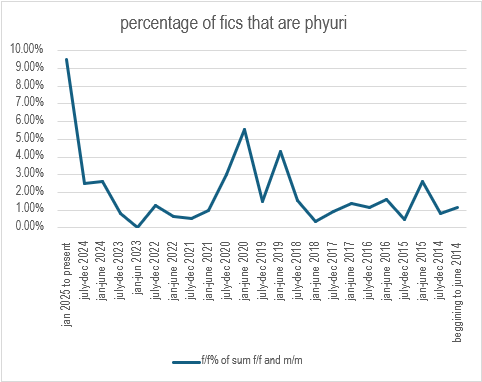
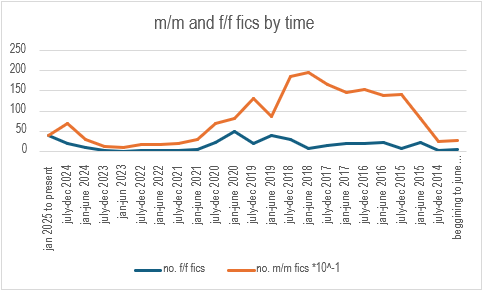
my data collection methods were not super good because this was more about me using excel so take this with a grain of salt
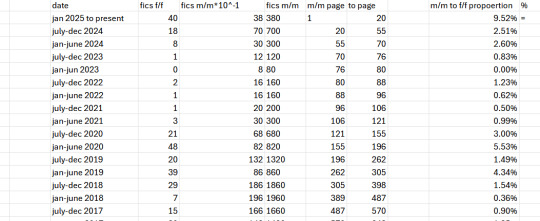
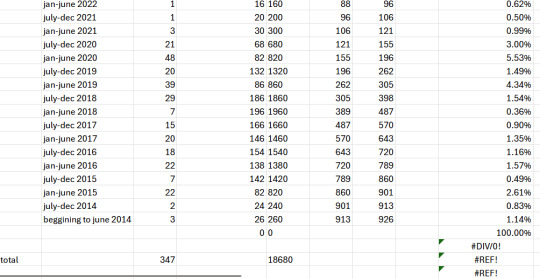
heres my data if anyone wants it, i know its a bit off because the totals are both slightly more than the fic totals on ao3. i basically manually counted the fics, when i was doing the f/f i got a bit confused because of publication dates on fics that were updated more recently being between much older fics and i counted them by the date they showed. with the m/m i counted the page numbers and x20 so it is more imprecise and also is more by publication than finished date.
#dan and phil#the ho yaps#dnp#phan#phyuri#dan howell#phil lester#ao3#phannies in stem#i spent wayyy to long gathering data manually but i lowkey dont mind it ?#maybe i should go into data science/statistics its quite fun and i seem to not mind the grueling parts of data collecting and sorting idk
64 notes
·
View notes
Text
in RStudio. straight up “instolling it”. and by “it”, haha, well. let’s justr say. My pakage
#sorry everyone who signed up for the star trek content#our usual programming will return momentarily#rstudio#statistics#data science#this is funny to me and maybe two other people
135 notes
·
View notes
Text


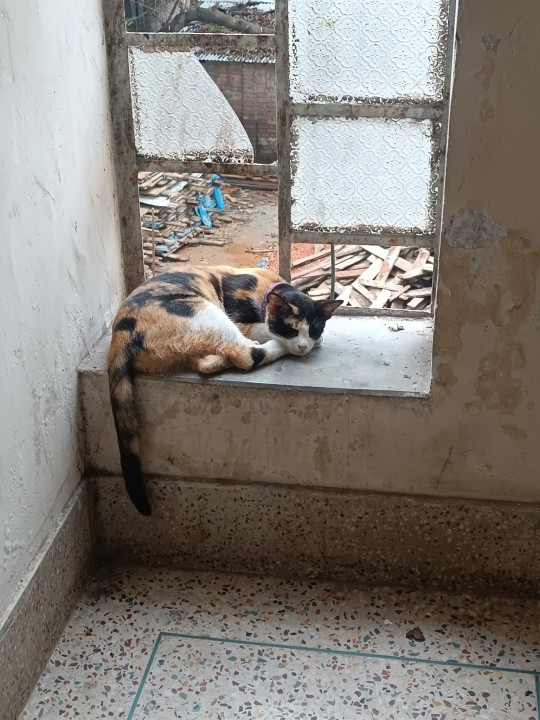
eid vibes
Exam diaries II.III, dop 1/100
Sunday, 15 June, 2025
Next Exam: Sampling Distributions (18.06)
I am both relieved and terrified of my sophomore year finals this year. I need so much more marks for As. ADHD has been rampant lately. I totally lost all joy in studying. Pushing through anyways...
Today's to-do: (insha'Allah)
Pray all 5 prayers F D A M I
Discrete Probability Distributions: pmf, cdf, use, pgf, mgf, mean, variance
Continuous Probability Distributions: pdf, cdf, use, mgf, mean, variance
Generating functions: pgf,pmf,cgf
Distributions function technique of finding distribution of a random variable
Distribution of minimums and maximums
Nothing is easy except for what Allah makes easy and he can make all difficult easy 🤲🏽
Hope you guys have a great time studying ~
#altin posts#studyblr#studyspo#statblr#datablr#study motivation#study inspiration#study session#study hard#100 days of studying#studying#statistics#data science#datascience#stemblr#stem studyblr#women in stem#stem academia
22 notes
·
View notes
Text
youtube
#statistics#mathematics#mathblr#math art#calculated risk#calculator#calculus#calculations#cat#black cat#cats#cute cats#kitty cat#cats of tumblr#catblr#kittens#kitten#kitty#kittyposting#cute kitty#natural science#science#mad scientist#data scientist#scientific illustration#research scientist#stem#stem student#stem academia#stemblr
17 notes
·
View notes
Text
Hey stats or linguistics nerds!
(Explanation below)
Explanation:
Countable and singular means you hear “data” and think there’s exactly one thing in discussion. You would use it like “this data is an outlier, whereas that one is not.” Examples of this form: a cat, an artwork
Countable and plural means you hear “data” and think there’s more than one thing being talked about. You would use it like “these data show a positive trend, whereas those do not.” When discussing just one, you would use the term “datum”. Examples: cars, planets
Uncountable means you hear “data” and think that there’s some quantity of it, but it’s not necessarily a numbered amount, in a similar way to a fluid. You would use it like “this data doesn’t prove my hypothesis, but some of that data does.” Examples: water, air
Bias alert:
My father is a database engineer and has always used the word “data” as uncountable. I believe the “correct” way to use it is countable plural with the singular form being “datum”, though there’s no real answer because it’s linguistics and languages shift with use. That’s why I’m asking the people, in order to know how the term is used
24 notes
·
View notes
Text
hmmm is there a different criterion of closeness required for expressing critique than for expressing praise? i don't know why there should be
#melonposting#this is for science...! and it's anonymous anyway.......!#my singular datapoint is very good and fascinating but ah! i want more data!! so my conclusions can be statistically significant!!! /silly#sorry i don't know why i'm belaboring this. it doesn't really matter
8 notes
·
View notes
Text
I'm in need of advice, reddit hasn't been helpful and I'm desperate so I've come to you Tumblr please help me
I'm currently a data scientist for a very small start up company, but I have my background in political science and so I'm concerned that I might be dead in the water if/when the company goes under and I need to find another job. I've consulted with some recruiters and they agree that if I want to go into data science I should get my master's (EDIT: they said I probably should get my degree in Statistics because the program is more widely known so I have a better chance of not getting turned away by HR who will have less knowledge about what a data science master's even is). I think because of my personality, data science is a really good job for me, so I'm planning on going for it.
Here's the issue: I don't want to go to school and end up learning exclusively theory. I've been teaching myself a ton by reading textbooks and I've noticed that while there's a lot of depth in the math/calculus/linear algebra behind how the functions work and what the parameters are, there seems to be very little information on how to actually apply that information in the real world.
Obviously the math is important and very exciting :D but if all I do is learn the math and I don't learn how to apply the knowledge I have to non-ideal data sets and situations then I'm not really learning the information I need to know.
Are there any graduate programs that are well known for really preparing people for data science roles in the workforce instead of just focusing on the academic side of statistics?
#statistics#data science#math#careers#jobs#grad school#what is the community tag for this idk#;---;#i have to sign up for classes for prerequisites right now so im nervous bc idk which classes to take if idk which schools i should apply to#reddit has not helped me </3
71 notes
·
View notes
Text
Master Data Science Course in Bangalore: Enroll with Kodestree Today!
Best Data Science Course In Bangalore
If you're looking for the ultimate Data Science Course in Bangalore, Kodestree offers the perfect platform to kickstart your data science journey. Whether you're a beginner or looking to refine your expertise, Kodestree's program combines theoretical knowledge and practical skills, making it the ideal choice for professionals and newcomers alike.
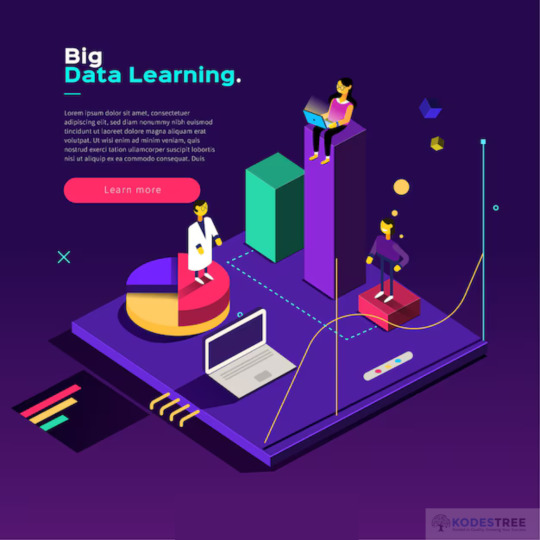
About The Course
Kodestree’s Advance Data Science Course is designed to help you master key concepts such as data analysis, machine learning, and visualization. Covering tools like Python, SQL, Pandas, and NumPy, the course provides a well-rounded education. With over 30 hours of on-demand video content, downloadable datasets, and practical assignments, learners acquire hands-on experience and industry-relevant skills.
Kodestree - Data Science Course Includes
30+ hours of immersive video lectures.
Python and SQL code notebooks.
Downloadable datasets for real-world practice.
Assignments and quizzes to track progress.
A Data Science Certificate upon completion.
Flexible online learning designed for all levels, from Data Science For Beginners to advanced professionals.
About Kodestree
Kodestree is a trusted name in tech education, providing cutting-edge Data Science Programs tailored for the evolving needs of the industry. With a focus on project-based learning, their courses equip students with the skills needed to thrive in a data-driven world. The faculty includes experienced professionals passionate about helping learners succeed.
Affordable Data Science Course
At just ₹20,000 (discounted from ₹28,000), Kodestree ensures affordability without compromising quality. Learners also gain access to lifetime course materials and a globally recognized Data Science Certificate.
Data Science Course Industry Masterclass
Kodestree’s Data Science Online Course in India offers in-depth insights into industry trends. Their curated content ensures students stay ahead in domains like Data Science Statistics, machine learning, and visualization. Hands-on projects provide Data Science Great Learning experiences essential for mastering the field.
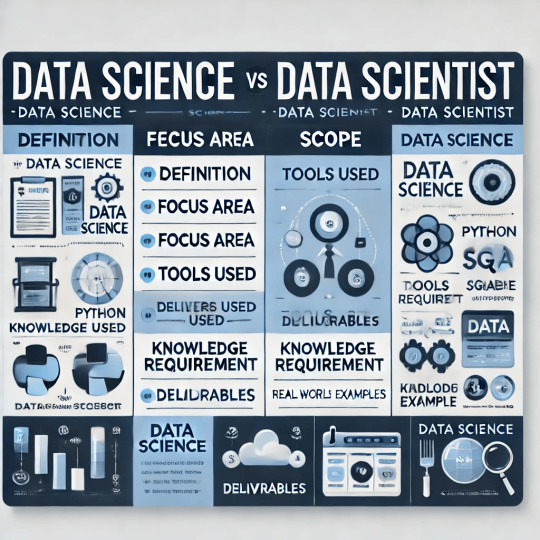
What is Data Science?
Data science is a multidisciplinary field that uses data to extract meaningful insights, solve complex problems, and drive decision-making. At its core, data science combines several disciplines, including statistics, mathematics, programming, machine learning, and domain expertise, to analyze large and complex datasets.
Key Components of Data Science:
Data Collection: Gathering data from multiple sources, such as databases, APIs, web scraping, or sensors.
Data Cleaning & Preprocessing: Removing inconsistencies, errors, or missing values to make the data usable.
Exploratory Data Analysis (EDA): Understanding the data through visualization and summarization techniques.
Statistical Analysis: Applying mathematical methods to find trends, correlations, and patterns in the data.
Machine Learning & Predictive Modeling: Building algorithms that can predict future outcomes or classify data.
Data Visualization: Presenting results using tools like Matplotlib, Tableau, or Power BI to make the insights understandable to non-technical stakeholders.
Communication: Sharing insights in a way that drives actionable business decisions.
Applications of Data Science:
Healthcare: Predicting disease outbreaks, personalizing treatments, and analyzing patient data.
Finance: Fraud detection, risk analysis, and stock market prediction.
E-commerce: Recommending products, improving customer experience, and demand forecasting.
Social Media: Sentiment analysis, trend prediction, and content recommendation.
Retail: Optimizing supply chains and enhancing customer segmentation.
In essence, data science helps organizations harness their data to create value, reduce costs, improve operations, and remain competitive in a fast-changing world.
Who is a Data Scientist?
A data scientist is a professional who uses analytical, statistical, and programming skills to extract insights from data and solve real-world problems. They bridge the gap between data and decision-making, transforming raw information into actionable business insights.
Key Roles and Responsibilities of a Data Scientist:
Data Analysis: Extract, clean, and analyze structured and unstructured data.
Model Building: Develop predictive or descriptive models using machine learning algorithms.
Data Visualization: Create dashboards and visual reports to make complex data understandable.
Communication: Explain findings to both technical and non-technical stakeholders.
Problem Solving: Design solutions for business problems by leveraging data.
Experimentation: Test hypotheses and validate assumptions through statistical methods.
Collaboration: Work with teams like engineering, product, and business to implement data-driven strategies.
Skills of a Data Scientist:
Programming: Expertise in Python, R, or SQL.
Mathematics & Statistics: Deep understanding of probability, linear algebra, and statistical methods.
Machine Learning: Familiarity with algorithms like regression, clustering, decision trees, and neural networks.
Big Data Tools: Proficiency in working with tools like Hadoop, Spark, or databases like MongoDB.
Communication: The ability to translate complex analyses into actionable business language.
Why Are Data Scientists Important?
Data scientists play a pivotal role in organizations as they uncover trends, predict outcomes, and support data-driven decision-making. For example, they can predict customer churn, recommend products, or improve operational efficiency.
Why Choose Kodestree?
Expert-led training from industry professionals.
Comprehensive curriculum covering Data Scientist Introduction to advanced topics.
Flexible, online learning modules.
Recognized Data Science Certificate Programs.
Real-world projects to prepare for industry challenges.
Student Reviews
Kodestree’s course was a game-changer! I went from a beginner to a confident data scientist. Highly recommend their Data Science Programs. – Priya K.
The instructors were exceptional, and the course content was top-notch. Kodestree’s affordable pricing made learning data science accessible. – Rahul S.
This was the most engaging Data Science Online Course in India I’ve taken. Loved the hands-on projects and personalized support. – Ananya M.
Popular FAQs
What is the duration of Kodestree’s Data Science Course?
The course spans 7 weeks, with flexible self-paced learning options.
What tools are covered in the course?
You’ll learn Python, SQL, Pandas, NumPy, Matplotlib, and more.
Does Kodestree provide a Data Science Certificate?
Yes, a globally recognized certificate is awarded upon course completion.
Can beginners enroll in this course?
Absolutely! The course is designed for Data Science For Beginners and professionals alike.
Is this an online or offline course?
Kodestree offers an online course for flexible, remote learning.
What is the fee structure?
The course costs ₹20,000, discounted from ₹28,000.
Does the course include real-world projects?
Yes, hands-on projects are integral to the learning experience.
Take the first step toward a data-driven future with Kodestree’s Data Science Course in Bangalore. Enroll today and earn your Data Science Certificate
#Data Science#Advance Data Science Course#Data Scientist Introduction#Data Science Certificate#Data Science Certificate Programs#Data Science For Beginners#Data Science Programs#Data Science Statistics#Data Science Great Learning#Data Science Course In Bangalore#Data Science Online Course In India
0 notes
Text
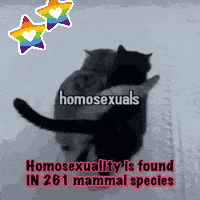
#gay pride#lgbtq community#gay shit#lgb without the t#lgbt pride#questioning#gay artists#positive quotes#science#data#datascience#datavisualization#stats#statistics#funny animals#cute animals#animals#activism#gay blog#gay marriage#gays#gay men#pride#pride month#Spotify
5 notes
·
View notes
Text
youtube
Statistics - A Full Lecture to learn Data Science (2025 Version)
Welcome to our comprehensive and free statistics tutorial (Full Lecture)! In this video, we'll explore essential tools and techniques that power data science and data analytics, helping us interpret data effectively. You'll gain a solid foundation in key statistical concepts and learn how to apply powerful statistical tests widely used in modern research and industry. From descriptive statistics to regression analysis and beyond, we'll guide you through each method's role in data-driven decision-making. Whether you're diving into machine learning, business intelligence, or academic research, this tutorial will equip you with the skills to analyze and interpret data with confidence. Let's get started!
#education#free education#technology#educate yourselves#educate yourself#data analysis#data science course#data science#data structure and algorithms#youtube#statistics for data science#statistics#economics#education system#learn data science#learn data analytics#Youtube
4 notes
·
View notes
Text
Statistics can be nefarious not just because of what this article talks about, but how they can be used to skew just about any perspective when combined with linguistic framing/psychology/clickbait.
That doesn't mean that stats have no quality for empirical use (they are SO useful in science and progress!), it simply means they can be more easily co-opted to push a narrative instead of revealing a truth.
#academic research#history#authoritarianism#civil rights#data science#polling#science#history is written by the victors#government#propaganda#psychology#ethics#population#pop culture#ethical sourcing#eugenics#ableism#ww2 history#human rights#politics#fun facts#curiosity#history of science#statistics
2 notes
·
View notes
Text
youtube
really great vid about interpreting data, by Dr. Fatima 😁 i feel lucky to have had a decent Statistics class where i learned a lot of this, but Dr. Fatima puts it into words in a way they never did! plus: a great anecdote at the end about the curb cut effect of data accessibility.
this is also why STEM should be STEAM (A for Art). Art (creativity, design, music, etc) is so important in learning how to understand & communicate what we perceive!!
#challenger#nasa#statistics#data science#data visualization#dr. fatima#women in stem#arab american scientist#astrophysics#engineering#data accessibility#Youtube
4 notes
·
View notes
Text
A note on Katharine Birbalsingh and Michaela Community School
The media narrative surrounding Michaela Community School in London mostly goes like this: Katharine Birbalsingh transforms poor inner-city (read: ethnic minority) children into academic superstars through the power of discipline. Thomas Chatterton Williams’s recent essay (full text here) in The Atlantic is merely the latest in a long line of fawning profiles that tout, implicitly or explicitly, Birbalsingh's iron fist as the solution to all that ails Britain. However, no article I have read so far has investigated other explanations for Michaela's high Progress 8 score nor endeavored to deconstruct the popular narrative surrounding the conservative superstar.
Williams begins the body of this piece by pointing out that Michaela “draws nearly all its students from Wembley, one of the poorest districts in London” in an apparent attempt to cast them as would-be low achievers, if not for Birbalsingh’s intervention. Although the characteristics of the individual pupils who attend Michaela have a greater impact on results than those of the school's neighborhood, he doesn’t bother to investigate how they differ. Among Michaela pupils who sat GCSEs over the past three years and whose prior attainment at Key Stage 2 (measured by an exam at the end of primary school) were available, 31% were high achieving, 53% were middle achieving, and only the remaining 16% were low achieving. For those who are uninterested in learning the nuances of British exam scoring, that means Michaela’s pupils were exceptionally bright even before they entered the school.
Birbalsingh furthers her savior narrative by describing Michaela's intake with unquantifiable terms such as "challenging" or "inner-city." However, only 28 of Michaela's 2024 GCSE takers (24%) were disadvantaged per the government's definition, "those who were eligible for free school meals at any time during the last 6 years and children looked after," in line with the national average of 25%. Although Birbalsingh likes to advance the narrative that she improves the academic performance of poor children—to be fair, she does, at a rate of roughly 30 individuals per year—she mostly improves the GCSE performance of middle class children.
Michaela's pupils are also self selecting, and therefore they are not representative of pupils in Wembley, London, or the UK as a whole. Any pupil who wishes to attend state secondary school in London must fill out a form indicating their top six choices, and they will be placed in one of those schools based on geography, demand, and availability. A pupil who does not wish to attend Michaela can leave it off their application, guaranteeing they won't attend. Therefore, Michaela is left with an intake of pupils who largely want to be there. By my calculations, Michaela's classwork and homework demand just over 49 hours of work each week. Although this does lead to good results, many teenagers would not abide by this; the 40-hour workweek is taxing even for most adults, who are blessed with more waking hours. Michaela's model and results cannot be easily repeated at any given school—at least not without systematic exclusion.
Williams unintentionally misrepresents a statistic when he asserts that “More than 80 percent of Michaela graduates continue their studies at Russell Group Universities.” He lacks a sufficiently deep understanding of the British school system to interpret this figure. While Michaela’s website states that 82% of its 2021 sixth form alumni attended a Russell Group university, it does not provide data on the university attendance of graduates from its secondary school, the disciplinarian institution which Williams profiles.
In the UK, sixth form (years 12 and 13, spent studying for A-levels) is separate from secondary school (years 7 through 11; the last 2 years, KS4, are spent studying for GCSEs). For Michaela, this also means a different admissions process. While there are no academic minimums to enroll in the secondary school, the sixth form requires an impressive average GCSE score of 7. Michaela has the capacity to enroll 120 students in each year of sixth form. However, the sixth form was under-enrolled by half in 2024. Michaela is a publicly-funded school, so this begs the question as to why state resources are not being utilized to their maximum capacity. The sixth form could educate more students simply by lowering GCSE requirements, but that would of course lead to less impressive university admissions—the kind that may not be displayed on Michaela’s home page. It is also possible that some secondary teachers would be pulled away to teach A-level subjects, worsening GCSE results, but that is speculation.
Thus far, all discussions of Michaela’s results have been woefully incomplete because they have not examined the effect of its narrow curriculum on its exam scores, instead focusing on the behaviorism that makes Birbalsingh’s authoritarian acolytes salivate. Williams's article is no different, only mentioning in passing that she believes “the national curriculum might force her to lower her own standards.” Depending on what changes the new Labour government implements, a revised national curriculum may indeed clash with Michaela’s philosophy. The school directs virtually all of its resources toward preparing pupils for its narrow selection of GCSE subjects or the few non-GCSE subjects that are required by the current national curriculum, such as PSHE, music theory, or PE. Birbalsingh is so focused on GCSE revision that she does not even believe volunteer work to be a "financially viable" option for Michaela pupils. Michaela's extra-curricular clubs all have a marginal cost of practically zero. In fact, several of them directly support curricular subjects, so they should rightfully be considered part of GCSE preparation.
A narrow curriculum obviously allows pupils to spend more time studying each GCSE subject they sit, thereby increasing their exam scores. Since most of the GCSE-level classes that Michaela offers are mandatory, pupils have little freedom to choose their own subjects (more on that later). Aside from that, cohort sizes stay remarkably close to 120 from year to year, and the school seems to impose a soft cap on classes of 30 pupils (120 / 4 = 30), so Michaela can hire the exact number of teachers it needs each year on a full-time basis. The school never needs to "waste" money hiring teachers for undersubscribed subjects, so it can also raise test scores by investing more in its core subjects than schools with broader curricula can afford to. On the flip side, Michaela does not offer dramatic arts, orchestra, individual sciences, computing, design and technology, foreign languages besides French, or a whole host of other popular subjects at the GCSE level. Other schools could easily raise their GCSE scores by slashing their curricula down to Michaela levels, but they offer a variety of classes because they care about their pupils experiencing joy and exploring a variety of career paths more than they care about their P8 scores.
For years, all of Michaela’s pupils have studied the same subjects at GCSE with some slight variations. A handful of pupils always sit for exams in heritage languages, but otherwise, the following paragraphs demonstrate approximately how the subject breakdown has looked over the past three years. (Earlier data has been distorted by COVID, or it is incomplete or outdated.) At the time of publication, 2024 data can be found here, while older results can be accessed through the link “Download data (1991-2024)”.
- 2022: 100% of pupils: English language, English literature, combined science, mathematics, religious studies. ~75%: French, geography/history. ~25%: Citizenship. ~25%: Art & design: photography, art & design: fine art. (I had to recreate this year from memory because individual subject entries do not appear to be retained in older data, but it is accurate to the best of my recollection.)
- 2023: 100% of pupils: English language, English literature, combined science, mathematics, religious studies. ~75%: French, geography/history. ~25%: Art & design: photography, art & design: fine art.
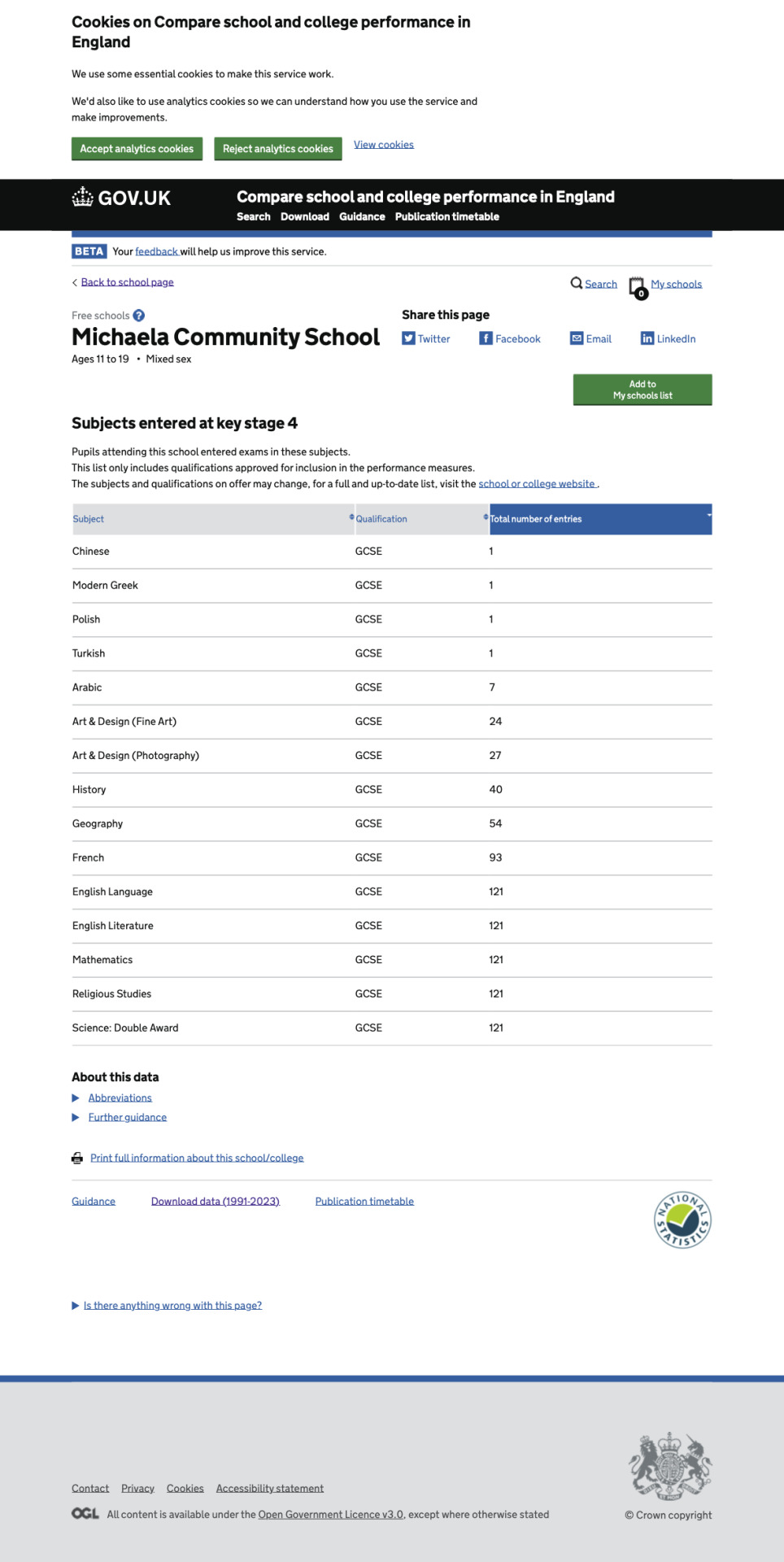
- 2024: 100% of pupils: English language, English literature, combined science, mathematics, religious studies, French. * ~80%: Geography/history. ~20%: Art & design: photography.
*This year, 3 pupils sat for biology, chemistry, and physics separately instead of taking combined science, but there is no explanation for this on Michaela's website.

Each year, about 90 Michaela pupils enter for the EBacc, a set of GCSE subjects encouraged by the British government. This usually works out to 75% of a cohort, but in 2024 it was 81% (94 pupils) because the cohort size was smaller than usual at only 116 pupils. Still, that means the largest class of EBacc entrants was only 32, in line with Michaela's projected class size of 30—despite Birbalsingh asserting that "class size matters little for success." Although the school comparison website does not list subject selections for individual pupils, it was easy to see how subjects were combined by cross-referencing exam entries per pupil and total entries per subject.
In 2021-2022, the pupils who did not enter for EBacc studied citizenship but neither French nor humanities. The study of art did not appear to correlate with EBacc entry.
In 2022-2023, the pupils who did not enter for EBacc studied photography and fine art but neither French nor humanities. Citizenship was dropped from the curriculum.
In 2023-2024, the pupils who did not enter for the EBacc studied photography but not humanities.
EBacc entry varies little across different pupil demographics such as gender, disadvantage, or English as an additional language. However, there is one characteristic that strongly determines EBacc entry at Michaela: prior attainment (PA). Over the past three years, out of 323 pupils for whom the PA data is available, 23% of low-PA pupils have entered the EBacc. This number is 83% for middle PA and 99% for high PA. According to my statistical analysis, the chance of these disparate "choices" arising without intervention is less than one percent.
At the end of Key Stage 3, Michaela staff pick approximately the top 75% of performers to enter for EBacc and require the lowest 25% to study other subjects.
This explains why only a few low-PA pupils enter for EBacc: although they are likely to remain in the bottom of their cohort throughout their schooling, some may improve enough to enter the top three quartiles. Although I am fully confident that my statistical analysis supports my assertion that Michaela pupils are not permitted to choose their GCSE subjects, the school has never disclosed a rationale for this practice, so the remainder of this essay will be speculation, not fact.
Michaela frequently boasts of its high Progress 8 (P8) score, and in order to understand my hypotheses, I recommend you familiarize yourself with its calculation. P8 is calculated by comparing actual Attainment 8 (A8) scores with expected scores based on Key Stage 2 (KS2) performance. This PDF explains how A8 scores are derived. (For my purposes, I will count double science as 2 GCSE subjects.) Therefore, a school with a non-selective intake such as Michaela can only change its P8 score by changing its A8 score.
Over the past few years, Michaela has refined its placement technique, presumably to increase its A8 scores. Pupils of any ability were permitted to study art at the GCSE level in 2022, but that option was removed the next year, probably so that high performers could devote more energy to EBacc subjects. Low performers who would have studied citizenship in 2022 instead studied art in 2023. Perhaps a part-time citizenship teacher would no longer be needed, and more resources could be directed to core subjects. All pupils studied GCSE French for the first time in 2024, giving each pupil 3 EBacc qualifications and finally maximizing A8 scores. However, the poorest performing 25% did not study humanities at KS4. This meant that approximately 120 * 2 * (1 - 0.25) = 180 pupils did study humanities at KS4, so with a typical class size of 30 and 6 class periods per day, one teacher could have accommodated all of them. If poor performers had studied humanities as well, hiring another teacher may have been necessary (and we already know how protective Michaela is of its budget).
The curricula for high and low performers are now identical, except for poor performers studying photography instead of humanities. Working from the assumption that Michaela intends to maximize its A8 score, this leads to one or two conclusions: it believes that poor performers will score higher on photography than French, and/or it does not want to expend humanities resources on poor performers because allocating them exclusively to high performers will raise the A8 score more. Similarly, no Michaela pupil has entered for more than 8 GCSE subjects (barring heritage languages, which do not demand too much revision time) since 2022, almost certainly to improve A8 scores. A limited class schedule allows pupils to devote more revision time to each core subject, while more exams would not raise A8, even if they did expand pupils’ horizons.
In the matter of GCSE curriculum, Michaela’s website is outdated and incomplete. It still enumerates the KS4 fine art curriculum, even though the subject was not offered at the GCSE level in 2024. It doesn’t mention that only three-quarters of pupils will study GCSE history or geography, so some parents who expect their children to study the humanities past age 13 may be in for a nasty surprise. Of course, this begs the question, what does Michaela have to hide?
It is difficult to understand how these prescribed schedules advantage Michaela’s pupils. Does the school not enroll maths whizzes who are determined to enter for mathematics, further mathematics, and physics at A-level, but who want one last artistic hurrah before starting sixth form? Are none of the poor performers averse enough to art that they'd prefer history? These prescriptions do not necessarily benefit Michaela’s pupils, but they do benefit the school’s P8.
Finally, Williams closes his article on a nostalgic note, contrasting his childhood with that of the Michaela pupil: “…my friends and I were free—luxuriously so—in ways these children possibly couldn’t even imagine. But that freedom that so many underprivileged and minority children bask in isn’t worth a damn thing if it leads to an adulthood boxed in by self-inflicted limitations.” Since the author was raised by college graduate parents and educated in private schools, and he is now a successful writer, he seems to believe that children who grow up rich can thrive on freedom, but the same is not true of the poor. Birbalsingh similarly believes that disadvantaged children need extreme discipline to succeed. However, she does not want to create a world where child poverty is eradicated so that every pupil can experience freedom, joy, and success at the same time. In fact, she envisions the opposite. She has spoken out against free meals for primary schoolers because she believes (without evidence!) that it would somehow make their parents less responsible. Even this concern were legitimate, it would pale in comparison to the necessity of feeding hungry children.
In the end, my dislike of Birbalsingh stems from her incredibly bleak worldview. She maintains that children should face the threat of starvation so their parents will be motivated to work harder. Even when testifying before Parliament, she believes the sexism that drives differences in A-level subject choices should remain unexamined. She propagates furry hoaxes—originally spread to mock trans people—to exemplify a supposed lack of discipline from parents. She believes if you don’t decorate your house for Christmas, you are destroying the country, and it is also somehow Vishnu’s problem (yes, the letter is truly that bizarre, and I recommend reading it for full effect). In her ideal world, she imagines suffering for suffering’s sake, a boot stamping on a human face—forever.
#katharine birbalsingh#birbalsingh#michaela community school#michaela#politics#british politics#uk politics#essay#longform#long form#data science#statistics#statistical analysis#education#education system#uk education#education uk#british education#united kingdom#london#wembley#i am a girl who likes hard maths
3 notes
·
View notes